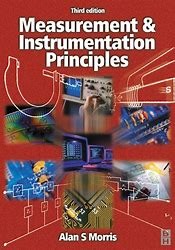
Measurement and Instrumentation Principles
The foundations of this book lie in the highly successful text Principles of Measurement and Instrumentation by the same author. The first edition of this was published in 1988, and a second, revised and extended edition appeared in 1993. Since that time, a number of new developments have occurred in the field of measurement. In particular, there have been significant advances in smart sensors, intelligent instruments, microsensors, digital signal processing, digital recorders, digital fieldbuses and new methods of signal transmission. The rapid growth of digital components within measurement systems has also created a need to establish procedures for measuring and improving the reliability of the software that is used within such components. Formal standards governing instru- ment calibration procedures and measurement system performance have also extended beyond the traditional area of quality assurance systems (BS 5781, BS 5750 and more recently ISO 9000) into new areas such as environmental protection systems (BS 7750 and ISO 14000). Thus, an up-to-date book incorporating all of the latest developments in measurement is strongly needed. With so much new material to include, the oppor- tunity has been taken to substantially revise the order and content of material presented previously in Principles of Measurement and Instrumentation, and several new chapters have been written to cover the many new developments in measurement and instru- mentation that have occurred over the past few years. To emphasize the substantial revision that has taken place, a decision has been made to publish the book under a new title rather than as a third edition of the previous book. Hence, Measurement and Instrumentation Principles has been born.
The massive growth in the application of computers to industrial process control and monitoring tasks has spawned a parallel growth in the requirement for instruments to measure, record and control process variables. As modern production techniques dictate working to tighter and tighter accuracy limits, and as economic forces limiting production costs become more severe, so the requirement for instruments to be both accurate and cheap becomes ever harder to satisfy. This latter problem is at the focal point of the research and development efforts of all instrument manufacturers. In the past few years, the most cost-effective means of improving instrument accuracy has been found in many cases to be the inclusion of digital computing power within instruments themselves. These intelligent instruments therefore feature prominently in current instrument manufacturers’ catalogues.
The very first measurement units were those used in barter trade to quantify the amounts being exchanged and to establish clear rules about the relative values of different commodities. Such early systems of measurement were based on whatever was avail- able as a measuring unit. For purposes of measuring length, the human torso was a convenient tool, and gave us units of the hand, the foot and the cubit. Although gener- ally adequate for barter trade systems, such measurement units are of course imprecise, varying as they do from one person to the next. Therefore, there has been a progressive movement towards measurement units that are defined much more accurately.